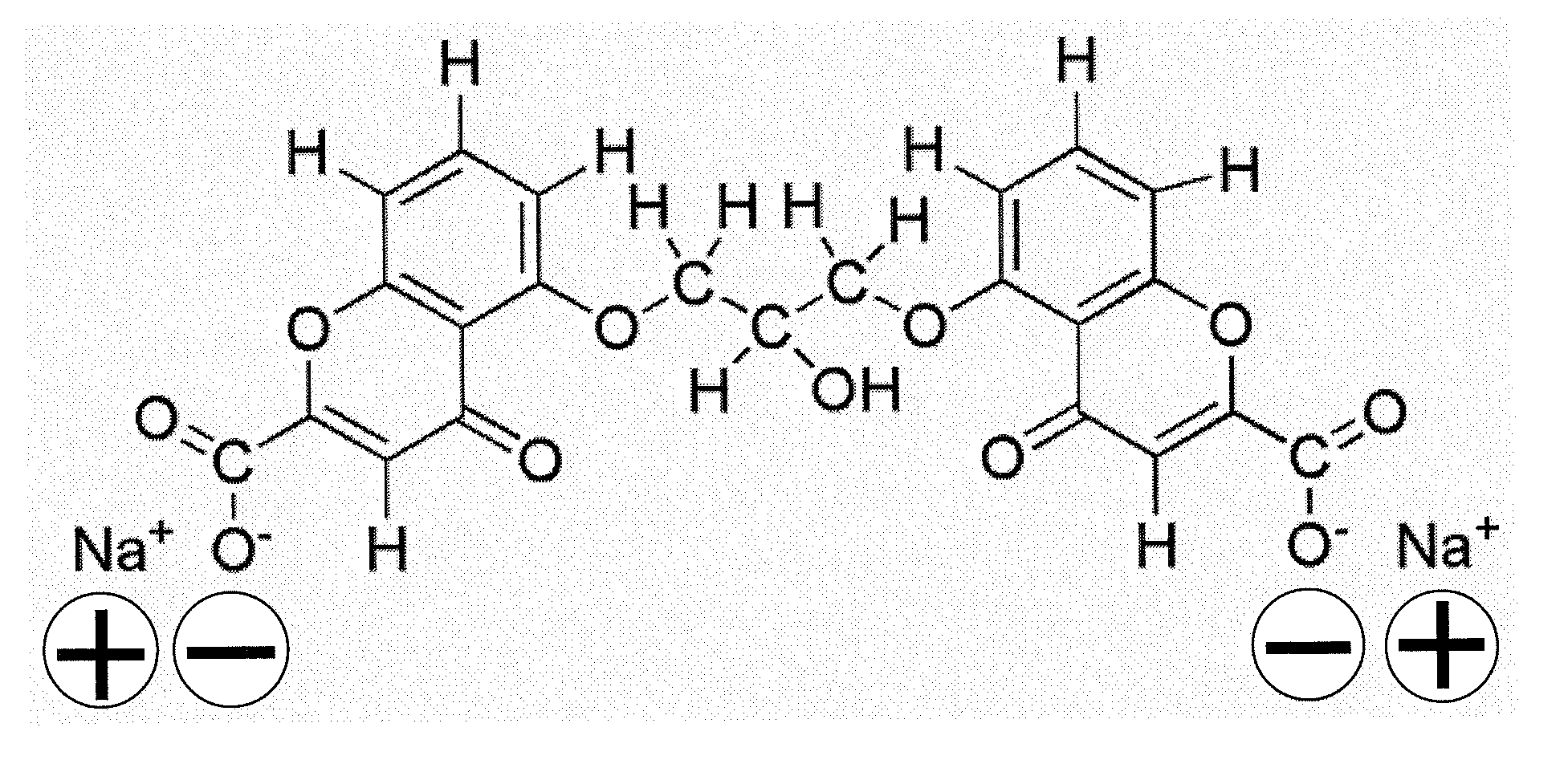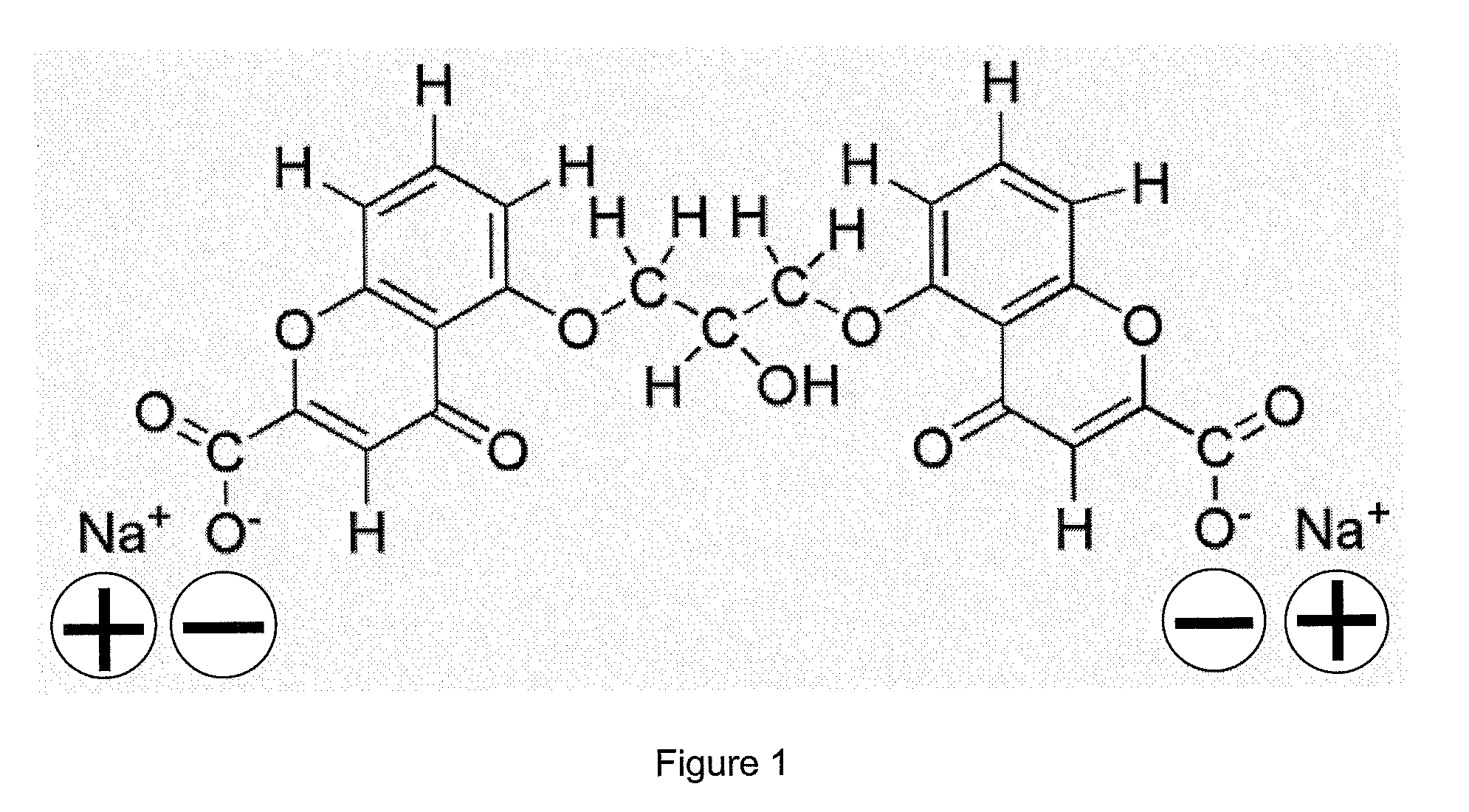Nanoparticle composition, a device and a method thereof
- Summary
- Abstract
- Description
- Claims
- Application Information
AI Technical Summary
Benefits of technology
Problems solved by technology
Method used
Image
Examples
example 1
Side-by-Side Assembly
[0040]Gold NRs of average aspect ratio 3 (length 45 nm and diameter 15 nm) were synthesized by using the seed mediated growth method reported by B. Nikoobakht, M. A. El-Sayed, Chem. Mater. 2003, 15, 1957-1962. The experiments were then performed with these Au NRs coated with CTAB, which imparted a positive charge to the rods. A 20 ml solution of gold NRs was centrifuged twice and redispersed into a final volume of 1 ml of deionized water to remove excess CTAB stabilizer from the solution. The purified gold NRs had a bilayer of surfactant on the surface and a net positive charge (zeta potential+30 mV).
[0041]In control samples with no DSCG added, no self-assembly was observed as the gold NRs repel each other. As shown in the TEM image of FIG. 2, the NRs appear isolated in the absence of DSCG.
[0042]Side-by-side self-assembly of Au NRs was induced by mixing a 0.8 mM DSCG solution mixed with 2 nM Au NR solution in water in a 1:1 ratio. 1 ml of DSCG solution in water ...
example 2
End-to-End Assembly
[0052]This Example was conducted similarly to Example 1, except that, to make the gold NRs negatively charged, 100 μl of 1% polyacrylic acid (PAA) (Mol. Wt. 400,000) solution in water was slowly added to 1 ml of the purified gold nanorod solution under vigorous stirring. The negatively charged PAA was adsorbed onto the positively charged gold NRs by electrostatic attraction and the excess COOH groups provide a net negative charge to the rods (zeta potential −25 mV).
[0053]End-to-end self assembly of Au NRs with CTAB and PAA coatings was induced by 0.1 M DSCG added to 2 nM Au NR solution in water in 1:1 proportion. TEM images of the end-to-end chains were taken about 6 hours (FIGS. 8 and 9) and 24 hours (FIG. 10) after the mixture preparation. FIG. 11 schematically represents the end-to-end assembly of Au NRs 111 with CTAB and PM coatings induced by the addition of DSCG 112. FIG. 12 shows the time evolution of the absorption spectrum of the Au NR solution after 0.1 ...
example 3
Quench Gold NR Assembly by Polymer Coating
[0057]A key challenge in producing the NR assemblies is to control their size, because the size of the assembled NR structures increases with time, resulting in giant clusters that eventually precipitate. In this Example, the growth of chromonic-mediated side-by-side NR assemblies was arrested by using polyelectrolytes.
[0058]In preparing a solution of NRs and DSCG similar to Example 1, 1% of PSS solution was added to the NR solution in the ratio of 1:4 at 0, 5, 15, 30, 60 and 120 minutes after DSCG was added. After the addition of the polyelectrolyte, the longitudinal and transverse plasmon peaks stopped shifting. After removing the excess polymer and DSCG by centrifugation, the resulting NR solutions demonstrate “arrested” spectral features that are stable for a period of at least one month, as shown in FIG. 13. FIG. 13 is the absorption spectra of the assembled NR structure with the addition of a 1% PSS solution at different reaction times...
PUM
 Login to View More
Login to View More Abstract
Description
Claims
Application Information
 Login to View More
Login to View More - R&D
- Intellectual Property
- Life Sciences
- Materials
- Tech Scout
- Unparalleled Data Quality
- Higher Quality Content
- 60% Fewer Hallucinations
Browse by: Latest US Patents, China's latest patents, Technical Efficacy Thesaurus, Application Domain, Technology Topic, Popular Technical Reports.
© 2025 PatSnap. All rights reserved.Legal|Privacy policy|Modern Slavery Act Transparency Statement|Sitemap|About US| Contact US: help@patsnap.com



